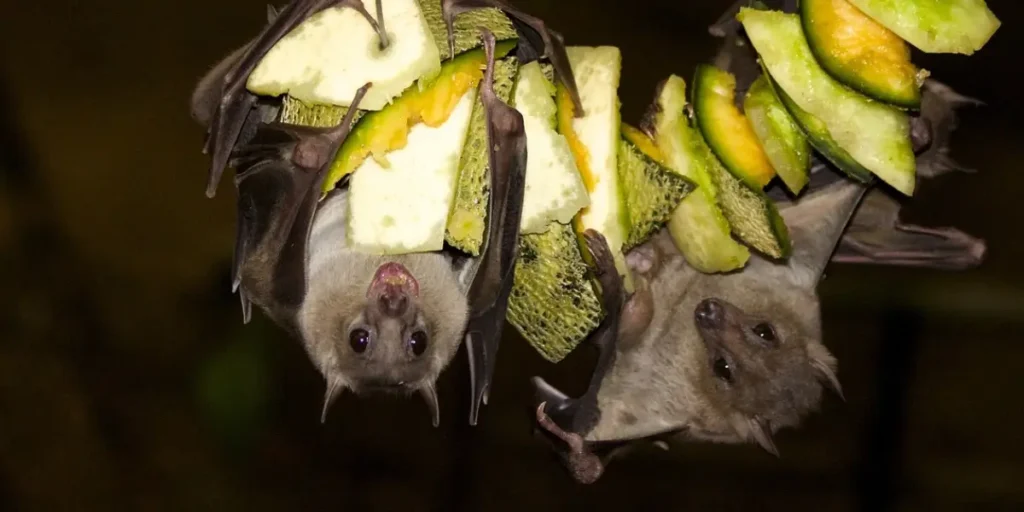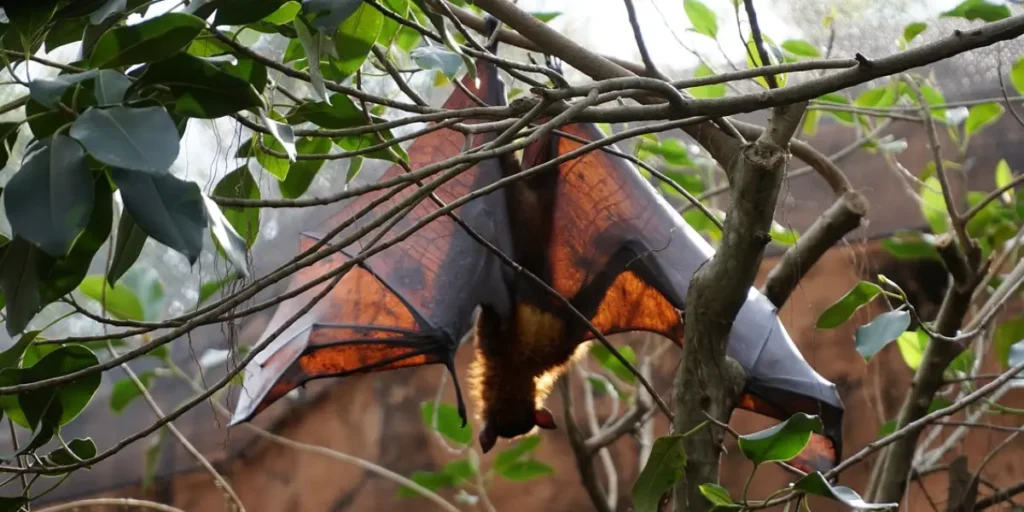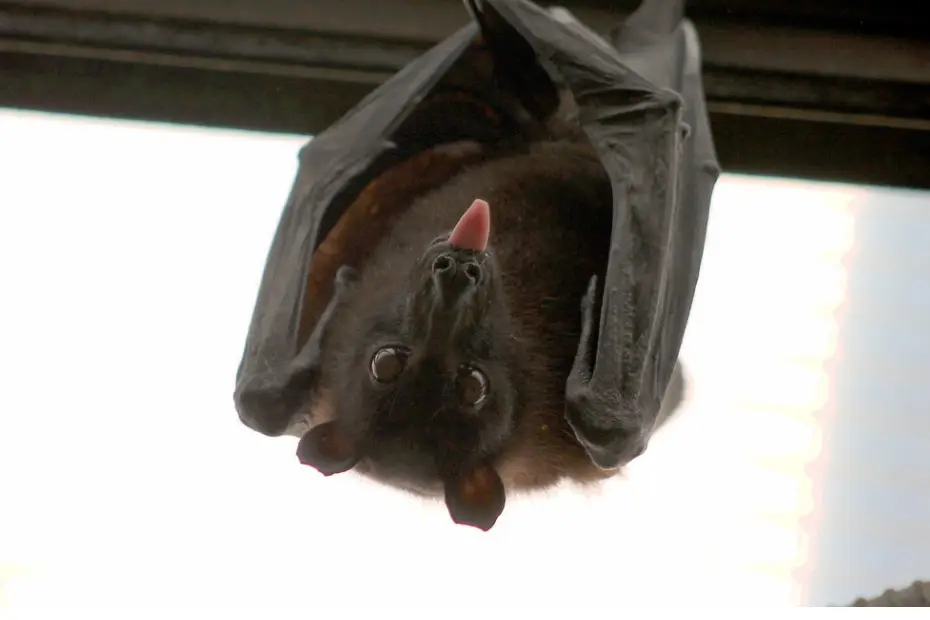Table of Contents
Bats are sometimes misunderstood creatures of the night, but they are nature’s unsung heroes—the stealthy swoop as they capture insects mid-air, the beautiful flutter of wings against the dusk sky. These nocturnal explorers are essential to our ecology because they perform priceless tasks like pollination and pest control. On the other hand, bat populations are declining globally as a result of habitat loss and human encroachment. You may welcome these nocturnal buddies into your backyard by erecting a bat house, which will provide a secure haven and promote a mutually beneficial relationship.
We will explore the interesting world of bats, comprehend their requirements, and provide you with the information and abilities to construct and install a bat house that will draw these helpful animals to your backyard in this extensive tutorial. Let’s go out on this adventure to establish a bat sanctuary and discover the delights of their nocturnal pursuits.
The Marvels of Bats: Dispelling Myths and Embracing Benefits
Despite their widespread fear and prejudices, bats are incredibly useful animals. They are not violent toward humans, nor are they blind as is commonly believed. The majority of bats are actually timid and kind, and they prefer to stay away from people. These nocturnal creatures are essential to preserving the harmony of the environment. They are natural pest controllers because insects are their main food source. It is possible for a single bat to eat millions of insects in one night, such as moths, beetles, and mosquitoes. This can help your garden and the surrounding surroundings use fewer pesticides.
Bats also aid in the pollination process and seed dissemination, which promotes the regrowth and development of plant life. Guano, the term for their excrement, is a rich source of nutrients that may be used as an organic fertilizer in your garden. You may benefit from bats’ ecological functions as well as contribute to their conservation by letting them into your property.
Busting Common Bat Myths:
- Bats are blind: Bats have excellent eyesight, but they rely primarily on echolocation to navigate and hunt in the dark.
- Bats are aggressive: Most bats are timid and stay away from people. They have no desire to attack people or tangle with hair.
- All bats carry rabies: Although they can transmit the disease, very few bats are actually affected with rabies. It’s crucial to stay away from direct bat contact and to get medical help if you get bitten.
- Bats are dirty: Bats are meticulous groomers and spend a considerable amount of time cleaning themselves.
- Bats are rodents: Bats are not rodents. They belong to the order Chiroptera, which means “hand-wing.”
Through recognizing the ecological importance of bats and debunking widespread myths, we may promote a deeper comprehension and admiration for these amazing animals. Constructing a bat house is a concrete method to show our backing for bat preservation and establish a peaceful cohabitation in our backyards.
Why Bat Houses? Creating a Welcoming Habitat
Bats are having a harder time locating appropriate places to roost since natural habitats are being further invaded by urbanization and degradation. A useful solution, bat houses give bats a safe and secure place to rest, raise their young, and hibernate. You are actively supporting bat conservation efforts and fostering a friendly environment for these important animals by building a bat house in your backyard.
Bat houses provide advantages that go beyond conservation. Bats will naturally aid in the reduction of pest populations in your immediate area as they make their home in your bat house. This can help your backyard environment become healthier and more resilient by lowering the need for chemical pesticides. Furthermore, bat houses present a rare chance to study and enjoy these amazing animals up close. For both parents and children, seeing them engage in nocturnal activities and acrobatic flight may be a genuinely enriching experience.
Key Advantages of Bat Houses:
- Provide Safe Roosting Sites: Safe substitutes for natural roosts that might be endangered by human activity are bat houses.
- Enhance Pest Control: As ferocious bug hunters, bats contribute to the natural regulation of mosquito, moth, and other pest populations.
- Promote Pollination and Seed Dispersal: Certain bat species are essential for pollinating plants and spreading seeds, which enhances biodiversity.
- Offer Educational Opportunities: Bat houses offer an opportunity to watch and gain knowledge about the behavior of bats and their ecological significance.
- Support Bat Conservation: You are actively aiding in the conservation of these priceless animals by creating habitat.
Remember, attracting bats to your bat house requires patience and creating a suitable environment. By understanding their needs and offering a safe haven, you can foster a mutually beneficial relationship with these nighttime allies and enjoy the rewards of their presence in your backyard.

Understanding Bats and Their Needs: A Closer Look
Understanding bats and their needs in greater detail is essential before starting to build your bat house. Because different bat species have different preferences for habitats, building a bat home that meets their requirements will greatly boost the chances of attracting them to your backyard.
Bat Species in Your Area:
Find out which common bat species are present in your area and what kinds of habitats they like. You can use this information to help you select the ideal bat home layout and style. While some bats like to nest in cracks, others prefer open areas. Building a viable and appealing home for your local bat population requires an understanding of their needs.
Ideal Bat House Location:
The location of your bat house plays a vital role in its success. Consider the following factors when choosing a spot:
- Sunlight Exposure:Because they are warm-blooded creatures, bats need enough warmth to survive. Your bat house should be oriented south or southeast and receive at least 6 to 8 hours of direct sunshine per day.
- Height: Install your bat home at a minimum of 12 to 15 feet above the floor. This height reduces the possibility of predators and gives bats a secure place to take off.
- Proximity to Water Sources:Water is necessary for bats to drink and to forage. The ideal distance for your bat house to be from a pond, lake, stream, or other water source is one quarter of a mile.
- Distance from Trees: Keep trees and other obstacles at least 15-20 feet away to give bats unobstructed flying pathways.
Bat House Design Considerations:
The design of your bat house is crucial for attracting and retaining bats. Consider the following features:
- Chamber Size: For the type of bat you are seeking, the chamber size should be suitable. For most species, a chamber width of 3–4 inches and a depth of 14–16 inches is appropriate.
- Landing Area: To make it easier for bats to enter, create a rough landing area beneath the opening.
- Ventilation: Make sure the bat home has enough airflow to avoid overheating and moisture buildup. Add tiny openings for airflow on the sides or top.
- Material Choices: Use plywood or other untreated wood, like cedar, to build your bat house. Steer clear of paints that might contain hazardous chemicals or pressure-treated wood.
You may create a welcoming and adequate habitat that will entice these useful creatures to live in your backyard by learning about the particular needs of bats in your area and taking these aspects into account when designing and placing your bat house.
Building Your Bat House: Tools, Materials, and Construction
It’s time to get your hands dirty and begin building your bat house now that you have a firm grasp on bats and their needs. If you’re not a skilled builder, don’t panic; the process is simple and can be completed using common tools and easily obtained supplies.
Materials and Tools:
Gather the following materials and tools before you begin construction:
- Untreated Wood: Choose cedar or plywood for its durability and resistance to weathering. You’ll need enough wood to create the front, back, sides, top, and interior partitions of the bat house.
- Saw: A hand saw or circular saw will suffice for cutting the wood to the required dimensions.
- Drill and Screws: Use a drill and screws to securely fasten the pieces of the bat house together.
- Hammer and Nails: A hammer and nails can be used for additional reinforcement or attaching the landing surface.
- Measuring Tape and Pencil: Accurate measurements are essential for a well-constructed bat house.
- Sandpaper: Smooth any rough edges or surfaces to prevent injury to bats.
- Exterior Wood Stain or Sealant (optional): Apply a non-toxic stain or sealant to protect the wood from moisture and prolong the life of your bat house.
- Caulking Gun and Caulk: Seal any gaps or cracks to prevent drafts and unwanted insects from entering.
- Safety Equipment: Wear gloves, safety glasses, and a dust mask when cutting and sanding wood.
Step-by-Step Construction Guide:
- Cut the Wood: Using the measurements you determined based on the bat species in your area, carefully cut the wood pieces for the front, back, sides, top, and interior partitions.
- Assemble the Chamber: Attach the sides to the back panel using screws or nails. Then, attach the front panel, leaving a small gap at the bottom for the entrance.
- Add Interior Partitions: If your design includes multiple chambers, install the interior partitions to create separate roosting spaces.
- Attach the Top: Secure the top panel to the assembled chamber, ensuring a snug fit to prevent rain from entering.
- Create the Landing Area: Attach a rough-textured surface, such as a piece of hardware cloth or coarse sandpaper, to the front panel below the entrance to provide grip for bats.
- Add Ventilation Gaps: Drill small holes or create gaps at the top or sides of the bat house to allow for ventilation.
- Seal and Finish: Caulk any gaps or cracks to prevent drafts. If desired, apply a non-toxic stain or sealant to protect the wood.
Safety First:
- Always wear gloves, safety glasses, and a dust mask when cutting and sanding wood.
- Handle tools with care and follow proper safety procedures.
- If you are unsure about any step of the construction process, consult a knowledgeable person or refer to online resources.
By following these steps and prioritizing safety, you can successfully build a sturdy and functional bat house that will provide a welcoming habitat for these nocturnal allies.

Installing Your Bat House: Finding the Perfect Spot
Now that your bat house is ready, it’s time to find the ideal location in your backyard for installation. Remember, proper placement is crucial for attracting bats and ensuring their comfort and safety.
Choosing the Perfect Spot:
Let’s recap the key considerations for bat house placement:
- Sunlight Exposure: Aim for at least 6-8 hours of direct sunlight per day, preferably facing south or southeast.
- Height: Mount the bat house at least 12-15 feet above the ground.
- Proximity to Water: Locate the bat house within a quarter-mile of a water source.
- Clear Flight Paths: Ensure there are no obstructions, such as trees or buildings, within 15-20 feet of the bat house.
Additional Tips for Placement:
- Avoid Artificial Lighting: Bats are sensitive to light pollution. Minimize artificial lighting near the bat house, especially bright floodlights or motion-activated lights.
- Consider Predation: While bats are agile flyers, they can be vulnerable to predators such as owls, hawks, and cats. Choose a location that offers some protection from predators, such as near a building or under the eaves of a roof.
- Think About Accessibility: If you plan on cleaning or monitoring the bat house, ensure it is accessible for maintenance.
Mounting Techniques:
There are several options for mounting your bat house:
- Pole Mounting: This is a popular and versatile option. Use a sturdy pole, such as a 4×4 post, and securely attach the bat house to the top. Ensure the pole is firmly anchored in the ground to prevent swaying or tipping.
- Tree Mounting: If you have a suitable tree in your yard, you can mount the bat house directly to the trunk. Use strong brackets or straps to secure the bat house and avoid damaging the tree.
- Building Mounting: Attaching the bat house to the side of a building can provide additional protection and warmth. Use sturdy brackets and ensure the bat house is securely fastened to the wall.
Patience is Key:
Keep in mind that it can take some time for bats to find and settle into your new bat house. Take your time and look for evidence of bat activity in the vicinity, such as bat droppings or bat presence at nightfall. After a few months, if there’s still no activity, think about moving the bat home or adjusting its location.
Bats need a friendly and accessible habitat, so you may increase the chances of drawing them to your backyard by carefully choosing the ideal location and employing the right mounting techniques.
Maintaining Your Bat House: Ensuring a Healthy Habitat
For the inhabitants of your bat home to live in a secure and healthy environment, it is imperative that you maintain it properly after installation. Maintaining your bat house and the health of the bats will depend on routine cleaning, inspection, and resolution of possible problems.
Cleaning and Inspection:
- Timing:Before bats return from migration or hibernation, in the late winter or early spring, is the ideal time to clean your bat house.
- Procedure: Remove the bat house from its mounting gently, and then brush away any leftover insect poop or old guano. Detergents and other strong chemicals should not be used on bats.
- Inspection: Look for any indications of deterioration, such as warping, loose screws, or cracks, while cleaning the bat home. To guarantee the bats’ protection and safety, quickly fix any harm.
Pest Control:
- Unwanted Guests: Occasionally, other animals, such as wasps, birds, or squirrels, may attempt to occupy the bat house. To prevent this, you can:
- Install a predator guard below the bat house to deter climbing predators.
- Seal any gaps or cracks that may provide entry points for other animals.
- Consider using a bat house design with a smaller entrance hole to discourage larger animals.
- Insect Infestations: If you notice signs of insect infestations, such as spider webs or wasp nests, carefully remove them during the cleaning process.
Winterizing:
- Preparation: In colder climates, it’s important to prepare your bat house for winter to protect bats from harsh weather conditions.
- Insulation: You can add a layer of insulation, such as natural fibers or foam board, to the exterior of the bat house to help retain heat.
- Ventilation: Ensure proper ventilation is maintained even during winter to prevent moisture buildup.
Additional Maintenance Tips:
- Minimize Disturbance: Avoid disturbing the bat house during the active season (spring and summer), as this can disrupt the bats’ roosting and breeding cycles.
- Monitor Activity: Observe the bat house periodically to assess occupancy and identify any potential issues.
- Seek Expert Advice: If you encounter any problems or have concerns about the health of the bats, consult with a local bat conservation organization or wildlife rehabilitator.
You are supporting the health and well-being of your bat population as well as extending the lifespan of your bat house by keeping it up to date. Recall that the secret to effective bat conservation efforts is responsible stewardship.
Attracting Bats to Your Bat House: Creating a Bat-Friendly Environment
Although constructing and setting up a bat house is a big start in the right direction, making your backyard a more bat-friendly place can encourage these nocturnal friends to live there. You may make your bat house more attractive and entice bats to live there by adding natural attractants and thinking about additional food possibilities.
Natural Attractants:
- Native Plants: Grow a range of natural plants that draw in night-flying insects, which are the main source of food for most bats. Think about growing flowers that bloom at night, such nicotiana, moonflower, and evening primrose. Bats benefit greatly from the unique habitat and foraging opportunities offered by native trees and shrubs.
- Water Features: For the purpose of drinking and insect hunting, bats need access to water. If you don’t live close to a natural water supply, think about enlarging your backyard with a little pond, fountain, or birdbath. Make sure the water is suitable for bats and clean.
Supplemental Feeding (if appropriate):
- Mealworms:You might think about providing mealworms as an additional food source in some situations, especially if natural food supplies are limited. When dusk falls, put them in a shallow dish next to the bat home.
- Consult Experts: To find out if supplemental feeding is required and suitable for your location, speak with local wildlife specialists or bat conservation organizations before beginning.
Be Patient and Observant:
It takes patience and time to get bats to your bat house. Keep an eye out for evidence of bat activity in the neighborhood, such as bat droppings or bat presence at nightfall. After a few months, if there’s still no activity, you might want to move the bat house or make other changes to its location or surroundings.
Keep in mind that bats are untamed creatures whose actions are subject to chance. Your odds of drawing these helpful animals to your backyard are higher if you provide a warm and inviting environment.
The Rewards of Bat-Watching: Witnessing Nature’s Nighttime Spectacle
After bats have made your bat house their home, you’ll be rewarded with an amazing show of nature’s nocturnal delights. It may be a really fulfilling experience to watch these amazing animals as they emerge at twilight and go on their nightly journeys.
Nighttime Wonders:
- The Emergence: Watch the bats come out of their roost as the sun sets and twilight sets, their wings silhouetted against the lowering sky.
- Acrobatic Flight: Admire their dexterity and accuracy as they maneuver through the air, executing complex movements to catch their prey.
- Echolocation in Action: As they create a mental map of their environment, pay attention to the subtle clicks and chirps of their echolocation calls.
- Social Interactions:Watch their lively exchanges and social dynamics as they forage and converse with one another.
Educational Opportunities:
- Learning for All Ages: Both adults and children can benefit from the unique educational opportunity that is bat-watching. Find out about their behavior, biology, and ecological significance.
- Inspiring Curiosity: Experiencing these animals up close can ignite a passion for wildlife and preservation that lasts a lifetime.
- Connecting with Nature: Bat-watching offers an opportunity to re-establish a connection with nature and recognize its marvels.
Citizen Science:
- Contributing to Research: To gather information on bat populations and behavior, a large number of bat conservation organizations depend on citizen scientists. You can make an important contribution to research and conservation efforts by keeping an eye on things and reporting what you see.
- Monitoring Bat Activity: Note the quantity of bats you see, their species (if known), and any unusual behaviors.
- Sharing Your Observations: To further our understanding of bat populations, share your research with regional bat conservation organizations or internet databases.
In addition to providing amusement and wonder, bat-watching is an important educational and conservation tool. We can promote a better awareness of these animals’ significance and help to safeguard them by paying attention to and enjoying these creatures.
Addressing Common Concerns: Bats, Rabies, and Coexistence
Despite all of the advantages that bats provide, it’s normal to be wary of them being in your backyard. By addressing these issues with realistic knowledge and helpful advice, we can promote a peaceful coexistence with these important animals.
Bats and Rabies:
- Low Risk: There is very little chance of getting rabies from bats. Rabies is carried by fewer than 1% of bats, and it is usually spread by direct contact with saliva or brain matter.
- Precautions: Steer clear of direct bat contact, and if you are bitten, get medical help right once.
- Vaccination:As a preventative step, think about getting vaccinated against rabies if you frequently come into contact with bats or reside in an area where bat populations are high.
Bats in the House:
- Prevention:To keep bats out of your house, seal any openings or crevices on the outside. Examine your vents, chimney, and attic for possible openings.
- Removal:If a bat gets inside your house, don’t panic and open doors or windows to let it go. For a safe removal if the bat is unable to depart, get in touch with a nearby animal rehabilitator or pest control company.
- Avoid Handling: Never try handling a bat on your own. If you have to remove it, do it with safety in mind by using a container and wearing strong gloves.
Bat Guano Management:
- Benefits: Bat guano is a rich source of nutrients and can be used as a natural fertilizer for your garden.
- Safe Handling: Wear gloves and a mask when handling guano to avoid inhaling dust or particles.
- Composting: Guano can be composted and added to your garden soil as a nutrient-rich amendment.
- Cleaning: If guano accumulates in or around your bat house, carefully remove it during the cleaning process.
You may live in harmony with these important animals and take advantage of the advantages they offer to the ecology in your backyard by being aware of the facts regarding bats and rabies, taking precautions to keep them out of your house, and managing bat guano properly. Keep in mind that we scare bats more than they do. We may cultivate a mutually beneficial connection with these evening allies with a little awareness and respect.
Conclusion: Embrace the Night, Welcome the Bats
Constructing a bat house is an easy yet effective method to support bat conservation and establish a healthy environment in your backyard. You may reap the many benefits these amazing creatures provide, from pollination and seed dissemination to natural pest management, by learning about their needs and giving them a safe habitat.
As these allies of the night take to the skies, filling the dusk with their silent grace, embrace the darkness, welcome the bats, and watch the magic happen. Never forget that every bat house, no matter how tiny, has an impact on both the planet’s health and the lives of these amazing animals.
Call to Action:
- Build Your Bat House Today: Collect your supplies, adhere to the building instructions, and place your bat house in an appropriate area.
- Spread the Word: Encourage people to take action by sharing your bat house journey with friends, family, and neighbors.
- Support Bat Conservation: To support the work of regional bat conservation organizations, donate to or volunteer for them.
Let’s work together to create a world where bats and humans can coexist harmoniously, appreciating the beauty and benefits of these incredible creatures.
Remember:
- Be patient: It may take time for bats to discover and occupy your bat house.
- Observe and learn: Enjoy the wonders of bat-watching and contribute to citizen science initiatives.
- Spread awareness: Educate others about the importance of bat conservation and dispel common myths.
By taking these steps, you are not only creating a sanctuary for bats but also fostering a deeper connection with nature and contributing to a healthier and more sustainable planet.



